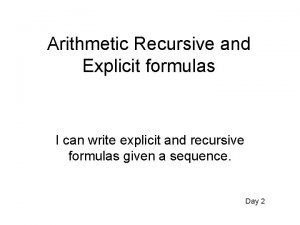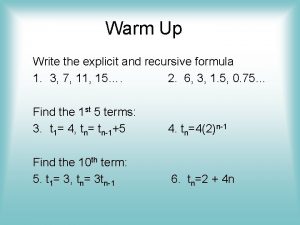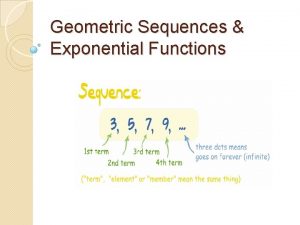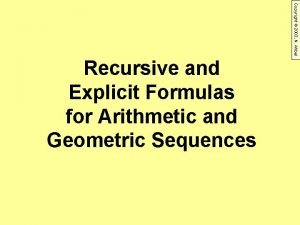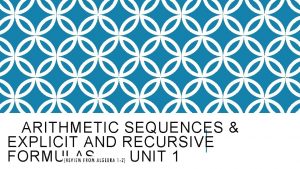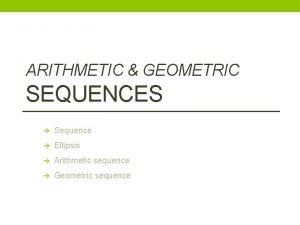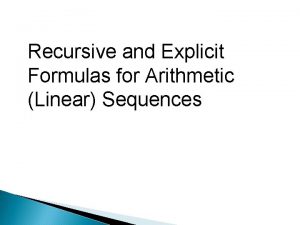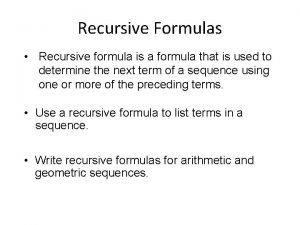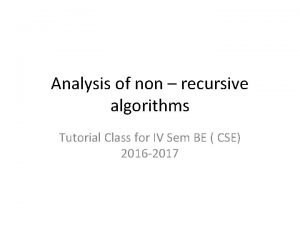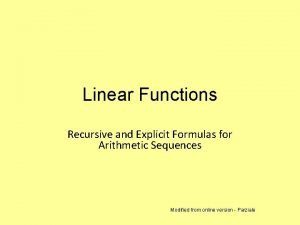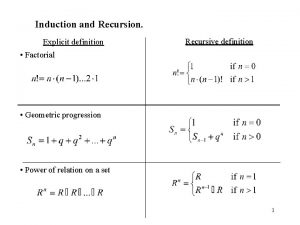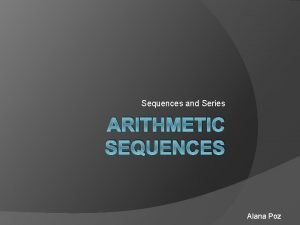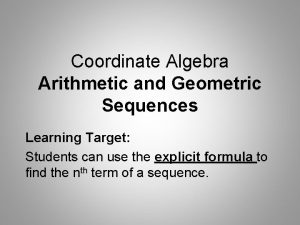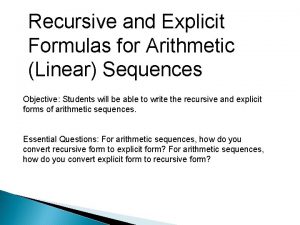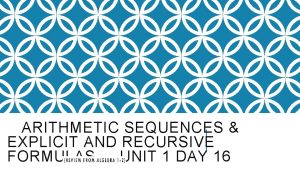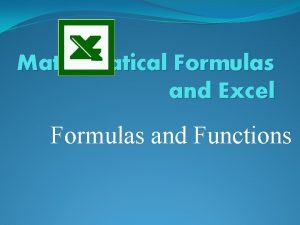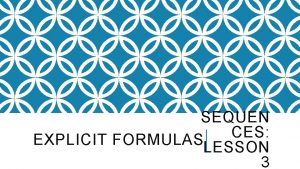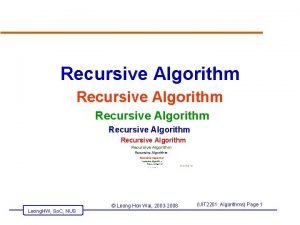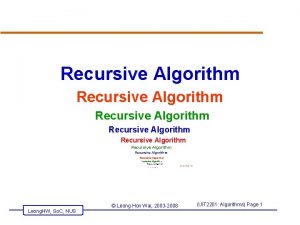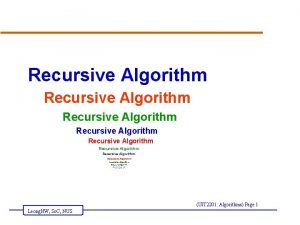Linear Functions Recursive and Explicit Formulas for Arithmetic












- Slides: 12

Linear Functions Recursive and Explicit Formulas for Arithmetic Sequences Modified from online version - Parziale

An arithmetic sequence is a sequence with a increase or decrease also known as the _________ In the sequence 10, 40, 70, 100, 130…. The common between the terms is _____

A recursive formula for the sequence would be: a 1 = 10 an = a n-1 + for n > 2

Graph the coordinates of the sequence: Term Value Coordinate 1 10 (1, 10) 2 30 (2, 30) 3 70 (3, 70) 4 100 (4, 100) 5 130 (5, 130) n an-1 + 3000 ( ) How would you describe the graph of this sequence?

Find the rate of change between two of the points. m= (y 2 – y 1) = (x 2 – x 1) = What would this suggest about the slope of the line in the graph of a linear sequence?

Arithmetic Sequences are also known as: linear sequences

Explicit Formulas A formula for an arithmetic sequence that allows you to find the nth term of the sequence by substituting in the expression.

Using the fact that the arithmetic sequence 10, 40, 70, 100, … is linear find the equation of the line by using the Point-slope formula: Pick point (1, 10) and the slope m that you calculated to write the equation. What is x for the given situation? What is y? y - y 1 = m (x- x 1)

This becomes the explicit formula for finding any term in the sequence. Theorem for the nth term of an Arithmetic Sequence: The nth term an of an arithmetic sequence with first term a 1 and constant difference d is given by the explicit formula: an = a 1 + ( n - 1) d

Example Given the following arithmetic sequence: 100, 120, 140, 160, … a) Define the sequence explicitly: b) Find the 10 th term.

Example The first row of theater has 15 seats in it. Each subsequent row has 3 more seats than the previous row. If the last row has 78 seats, how many rows are in theater?

Closure • The increase or decrease in an arithmetic sequence is called a ________. • What is the general form of the recursive formula of an arithmetic sequence? • What is the explicit formula nth Term of an Arithmetic Sequence? • What are the a 1, and d values? • Given a sequence, how do you find the equation of the line that represents it.
 Recursive to explicit
Recursive to explicit Explicit vs recursive sequences
Explicit vs recursive sequences Recursive formula for exponential function
Recursive formula for exponential function Explicit formula equation
Explicit formula equation Site:slidetodoc.com
Site:slidetodoc.com Recursive formula geometric
Recursive formula geometric Difference between recursive and explicit
Difference between recursive and explicit How to find recursive formula for arithmetic sequence
How to find recursive formula for arithmetic sequence Non recursive algorithm example
Non recursive algorithm example Explicit formula
Explicit formula Explicit vs recursive
Explicit vs recursive Arithmetic explicit formula
Arithmetic explicit formula How to find arithmetic sequence
How to find arithmetic sequence
